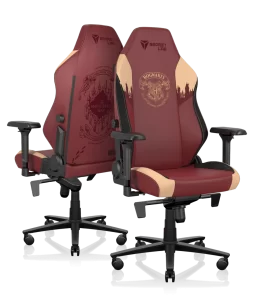Re-Watching “Potter” as a Television and Film Student
I’m a communications student. I like to think that explains me pretty much to the fullest. I have always watched movies more carefully then all my friends because that’s what I’m interested in. Every DVD I get I have to get the one with the most special features and behind-the-scenes footage. I love to see how things are created to come alive on the screen. Since I’ve been studying communications (concentrating in television and film production) for the past two years in college, these habits have escalated. Last semester I even wrote my final paper for my cinema and digitaltTechnology class on the cinematography within the Harry Potter movies and how it changes from film to film as the directors change.
For the purpose of this post, I won’t get into analyzing all eight films because that could take a while. I will just give a few examples and a brief overview to maybe get you thinking and looking at how the movies are shot the next time you watch them.
Chris Colombus used a lot of wide shots in the first two films. These really helped to capture the vastness of the world he was hoping to create. Wide shots of the castle and the grounds helped to create the feeling of the young witch and wizards’ awe at the world they are entering. The depth in all the scenes in the first two movies is noticeable and again, adds to the impressiveness of Hogwarts and the wizarding world.
The third film, my personal favorite, is in my opinion one of the most beautifully shot. The feel of the film series changed dramatically with this film as Alfonso Caurón created a bit of a grainier look. The story here shifted from the audience view to shooting a lot from the characters’ views. Stepping away from the literal, he used creative shots to shift the storytelling from a general view to Harry’s point of view. An example of this is the scene where Harry and Hermione are battling the Whomping Willow. Harry’s glasses are knocked from his face, and when he gets back up, the camera lens goes blurry.
Cuarón’s cinematography is used more to tell a story than to show beautiful scenery. While there are a lot of stunning shots of the Scottish countryside where they were shooting the film, these do not take place during action in the film. They are more transition shots.
One of the major differences between Columbus and Cuarón, regarding cinematography and camera movement choices, lays in stylistic preferences. While Columbus uses a more traditional Hollywood approach to getting smooth shots with only the occasional sweeping motion, Cuarón often uses handheld cameras to help bring the audience into a moment and make it feel raw and genuine.
The differences don’t stop here. The rest of the films are equally as interesting to look at and compare to one another. Which director’s cinematography is your favorite and why?

